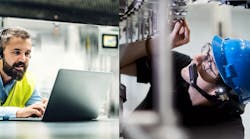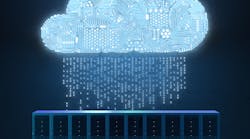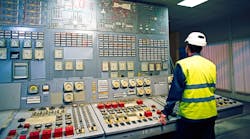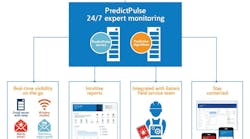The impact of COVID-19 on manufacturing facilities has been significant. While offices across America have largely pivoted to online platforms for web-based collaborations between colleagues, the industrial sector has also had to contend with how to safely startup and commission process control systems in their facilities which have traditionally required timely on-site interventions and communications with product experts.
Commissioning a process control system requires extensive collaborations between an on-site field team and their vendors whose engineering support teams have been largely working remotely. The challenge for vendors has been how to continue to support their customers with effective training and mentoring.
According to ARC industry reports, human error is the primary cause of 42% of abnormal events and a secondary contributing cause in over 65% of the cases, so there can be no training or support shortcuts.
Advances in both hardware and software tools enable remote mentoring to be possible where expert knowledge can be delivered to reduce risks and ensure effective startups. This now includes intelligent wearable devices that enable remote experts to see what a field technician sees when working on hardware in a facility. With such advancements, it is now possible for a single remote expert to assist multiple people and facilities at the same time without travel.
Accelerated by the working constraints caused by the pandemic, the adoption of these technologies is now suggesting a bigger role for remote-based training and support of manufacturing and process control system needs after the pandemic is over.
One company that has embraced the capabilities of remote support even before the pandemic is Quakertown, Pennsylvania-based NovaTech Automation—a leading provider of procedural automation solutions for the past 30 years whose patented software is used in high-risk government applications.
“Long before COVID-19, we were applying advances in web technologies that would allow us to deliver cost and mission-effective remote support services to our customers,” said Dwight Wood, Vice-President, Global Sales, NovaTech.
“Today we are just doing it at a different level—whether it is to troubleshoot issues, support a remote startup or collaborate on a commissioning.”
The Role for Virtualization and Simulation
Before COVID-19, implementing a new process control system would typically entail bringing the experts who developed the application software into a facility to work with plant engineers on design, factory acceptance testing, and startup and commissioning.
“Customers want the person who actually developed the code supporting them as directly as possible,” said Wood.
“With our virtualization and simulation technologies, a customer can now effectively startup a facility and still have the subject matter expertise on hand in real-time to walk them through the process,” said Wood.
“We will also have already checked out the system together remotely through a factory acceptance test.”
These remote collaborations can significantly reduce the time spent in the field with a customer in locations where it is still permitted. Wood estimates that on-site time is now reduced by half and up to two-thirds. And when lockdown requirements do not permit a visitor to come on-site, remote support is proving to be an effective replacement.
Commissioning projects will often involve both software and hardware component with hardware-focused implementations usually containing some level of software support as well.
Hardware Commissions
NovaTech Automation integrates an intelligent wearable solution for customers when a commissioning effort involves hardware so that their support teams can see exactly what the technician is viewing such as when wiring an I/O cabinet or installing a new controller.
The company uses a RealWear HMT-1 headset technology which is a ruggedized Android computer that an operator wears on their head. Instead of using a traditional touch screen, it provides an articulated micro-display that gives the appearance of a 7-in. tablet screen. The headset is entirely hands-free and uses a voice-based operating system with local speech recognition. Multiple digital microphones enable use in loud areas. It's designed to be worn with standard hard hats, bump caps, and safety glasses and is for use in explosive areas, combustible zones, and hazardous environments.
NovaTech uses the headset to provide remote support through established collaboration platforms such as Microsoft Teams or Cisco WebEx.
“We have the ability to have our eyes and ears available to the technician in the plant and assist them in a prudent, real-time manner so that they can install that piece of hardware and do the wiring correctly,” said Wood.
In 2020, one of NovaTech’s customers was upgrading their D/3 distributed control system and needed prompt engineering support to ensure a smooth transition to their new version. The customer had a RealWear headset with Microsoft Teams installed.
After initiating a video call with a NovaTech support engineer, the customer was able to share their camera and the support engineer walked him through the entire upgrade process.
Software Installations
Remote support for software installations must be done with cyber-security in mind requiring multi-factor authentications.
“Our support teams are able to go into the software securely and pull up the same data and screens that a plant engineer sees, so they can assist them through the startup of a new piece of application software or a software upgrade,” said Wood.
“Some of our customers consider what we have been able to accomplish together as a paradigm shift in remote support services,” said Wood.
“So, as we move out of COVID, we expect more customers will want to move in this direction. Besides lowering the infection risk, there are fewer safety risks overall when you reduce the number of people physically working in a facility. Travel time and costs associated with sending people to a plant are also reduced.”
Reimagining Workflows From Startup to SOP
Just as the pandemic required operators and vendors to quickly pivot to new remote-based workflows for startups and commissioning, digital solutions are now available to support SOPs for the maintenance and ongoing support of the updated equipment and software through augmented manual procedure (AMP) software.
AMP software enables facilities to replace their paper-based SOPs with a digital format that is capable of operating on a wide range of hardware such as smartphones, PCS, and tablets.
In the field, manual procedures are linked via the operator’s mobile or stationary device interface to the process control platform through software that enables bidirectional communication regarding equipment status and task completion. Information is displayed as an operator-friendly checklist with completed tasks self-audited and timestamped for future reference and compliance reporting. It's therefore ideal for distributed teams working remotely.
AMP software developed by NovaTech ensures accurate SOP execution along with validation of manual tasks and comprehensive information capture/sharing. The company views AMP as another example of how technology can better support fieldwork.
According to NovaTech’s Wood, “Just as we now train and mentor on best practices remotely, afterward facilities can establish or update their SOPs digitally and integrate them with their existing control system. SOPs are then much easier to update, streamline and standardize across the organization in the future.”
A New Era of Remote Support
Whether supporting software or hardware-based projects, expert mentors are increasingly working with operators and technicians remotely to execute upgrades, startups, and commissions, complete complex tasks, and support training and continuous improvement programs.
“As a partner to our customers, what really excites us about the coming together of these technologies is the ability to provide cost and mission-effective real-time support,” said Wood.
“We can literally have a window on their work with the capability to answer questions, optimize installations, troubleshoot issues, and receive feedback from our customers. This way of working together is highly complementary to being together in person and we expect that it will be here to stay in some form well beyond the pandemic.”

















